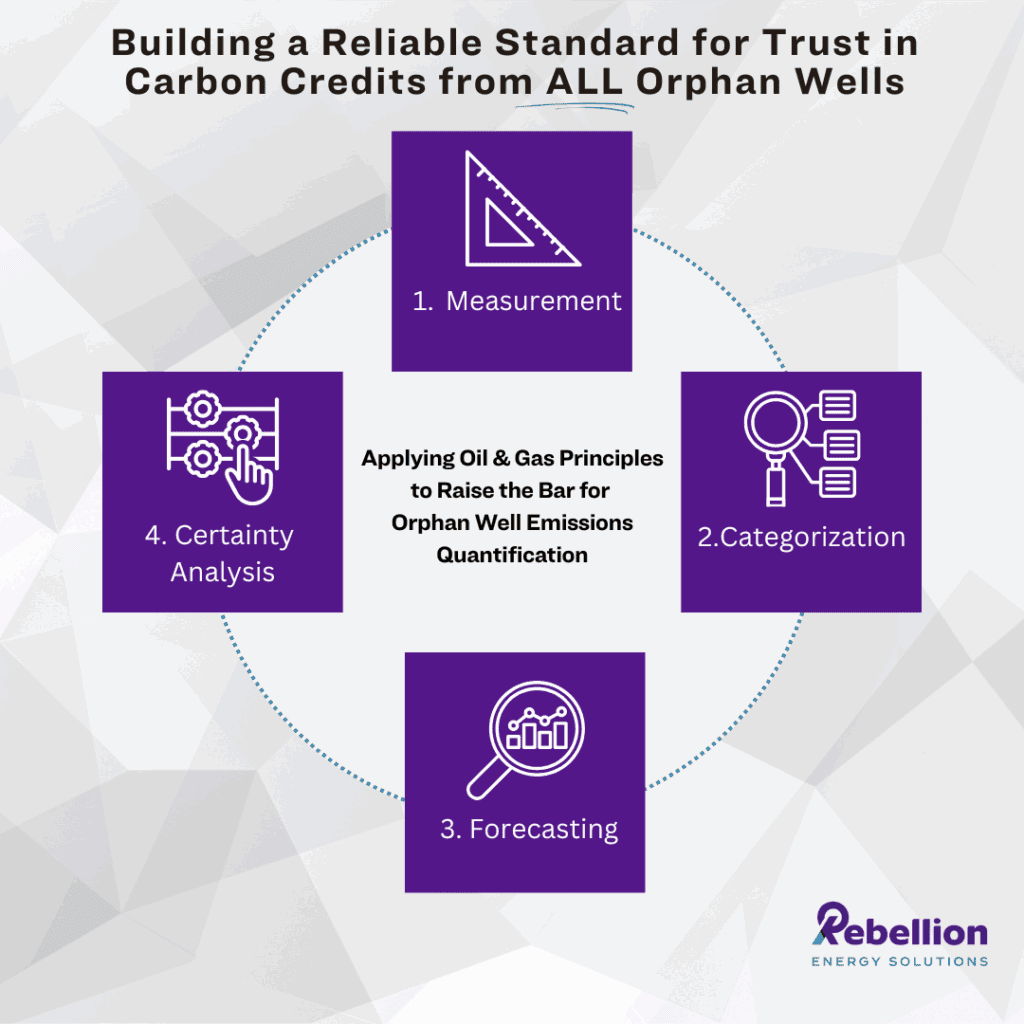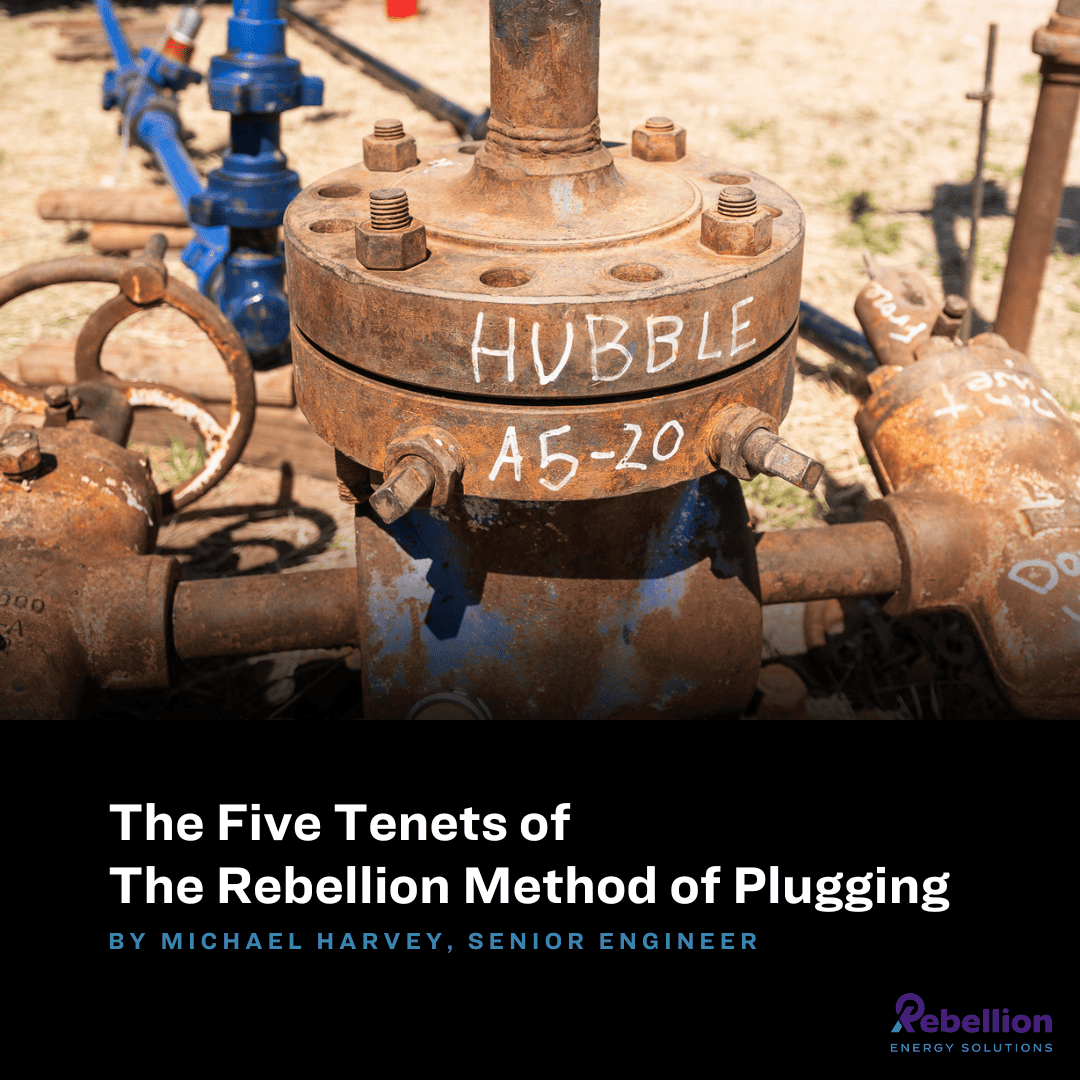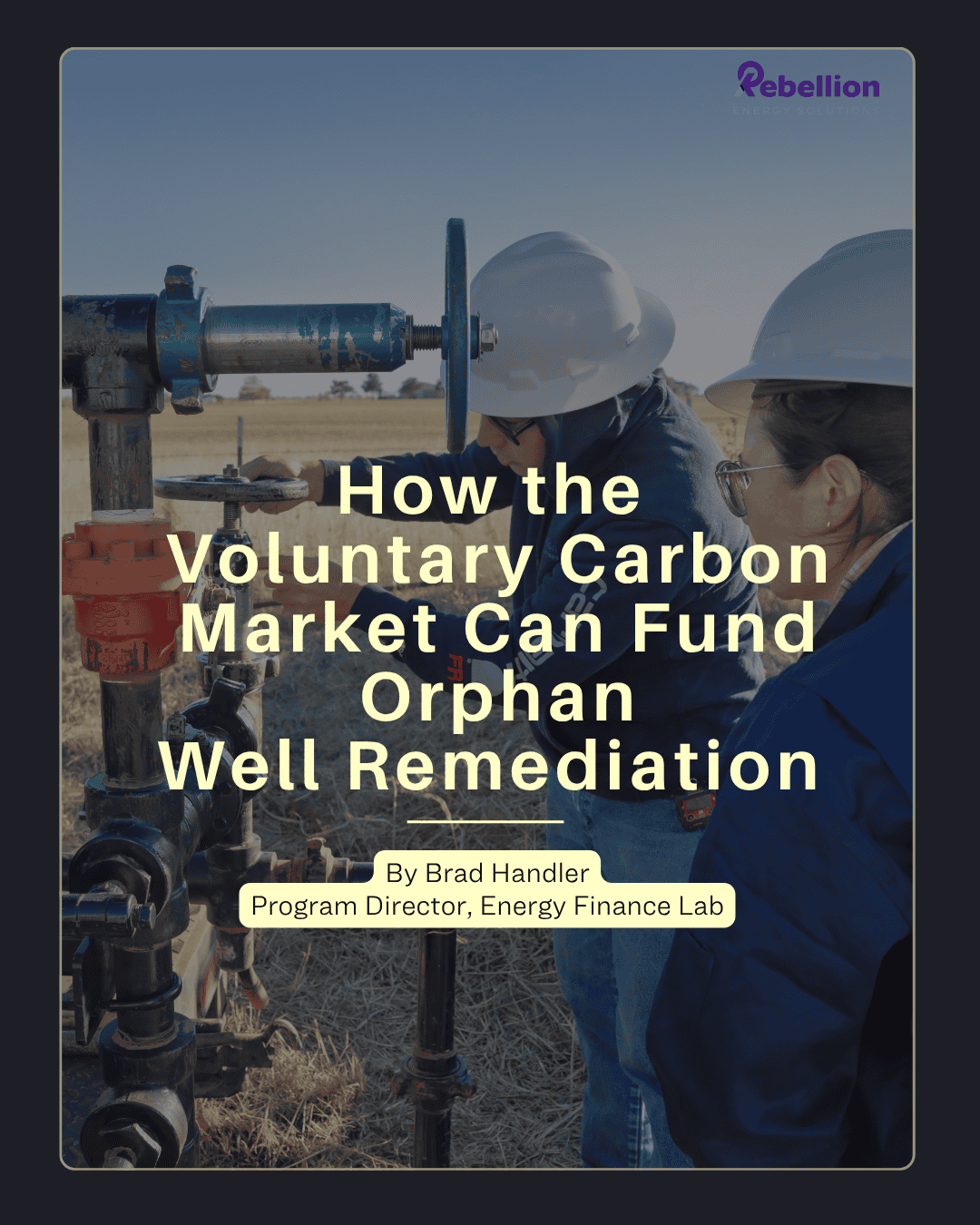By Eric Perner, COO
Applying Oil & Gas Principles to raise the bar for Orphan Well Emissions Quantification
At Rebellion Energy Solutions (RES), we are committed to leading the way as a market emerges to tackle the clean-up of orphaned oil and gas (OOG) wells across the United States. Not only is our team identifying, measuring, and plugging these wells to the highest standards, we are also working to create awareness within the carbon market and build trust in these methane abatement projects. Our learnings from the past several years are substantial and we are excited to share a small portion of those lessons with the introduction of our groundbreaking Certainty Policy for the Quantification of GHG Emissions Reductions from Plugging OOG Wells, a forward-thinking framework addition designed to enhance the accuracy and integrity of methane emissions quantification from OOG wells. This policy reflects our dedication to maximizing environmental impact while fostering trust across the carbon credit ecosystem.
What We Are Doing
This policy accurately quantifies methane emissions reduction from plugging a wider range of OOG wells types. Specifically, Rebellion proposes longer measurement periods for higher emitting wells and a forecasting model that trends downward over the crediting period. These concepts are rooted in petroleum engineering production and reservoir principles rather than a flat extrapolation of a point in time measurement. This declining approach ensures a more realistic estimate of avoided emissions, particularly when more energy is present. Rebellion believes that by adding this layer of forecasting, the foundational methodology will more accurately capture abated emissions from all OOG wells, ensuring that every carbon credit on the market represents a tangible reduction in atmospheric impact.
Why We Are Doing It
The current industry standard – used in existing carbon credit methodologies – assumes the measured rate of emissions remains constant for the full crediting period, meaning a leak will continue to leak, unchanged, for the full crediting period. This concept is sufficient for the stereotypical orphan well (often referred to in published research studies) with minimal energy held behind surface equipment. However, our team of petroleum engineers understand that this does not take into consideration key fluid flow and subsurface characteristics that impact how oil and gas reservoirs with significant remaining energy behave over time. These reservoirs are pressurized, just like a carbonated soda; as gases come to surface, the pressure held within the can decreases until eventually there is no longer energy present to push fluids to surface.

By not accounting for this natural depletion of energy, the existing method may risk over-estimation. The Rebellion Certainty Policy addresses this less common subset of wells that is being discovered as more wells are measured. It introduces a structured, physical science-based approach straight from petroleum engineering principles, the application of a terminal decline rate to the stable baseline measurement. This proven engineering standard reflects the natural production lifecycle of a well more precisely, mitigating over-crediting risk and layering in a more conservative approach that is durable.
How We Are Doing It
The Rebellion approach combines petroleum engineering forecasting techniques with extended measurement timeframes to deliver a more accurate emission volume. This industry standard practice accounts for the natural decline in production as wells reach the final, and longest-lived phase of their life. First, longer emission test periods are required that meet the same strict stability requirements for both pressure and rate. These extended baseline tests are based on emissions levels – the higher the rate, the longer the test must hold stable. Once a stable baseline measurement is achieved, the wells are “bucketed” into Low, Mid, High, or Super-Emitters. A terminal decline rate is then applied to each bucket.
The range of terminal decline rates is empirically based, relying on historical production from hundreds of thousands of wells over the last 50+ years of hydrocarbon production. This dual strategy integrates historical production data, sensitivity analysis, and scenario evaluations to ensure that forecasts are grounded in real-world data and conservative assumptions. For instance, wells with higher emission rates undergo more rigorous testing, and adjustments to baseline rates utilize higher terminal declines when historical data suggests caution, further reinforcing our commitment to data integrity.
Why It Matters
This policy doesn’t just raise the bar for Rebellion Energy Solutions, it benefits the entire carbon ecosystem:
- Carbon Buyers purchase credits with confidence, knowing a conservative technical approach eliminates over-crediting risk and guarantees genuine emissions reductions.
- Carbon Developers generate higher-quality, higher-integrity credits that hold more long-term value.
- Validators and Ratings Agencies can review data backed by established petroleum reservoir engineering practices and sound data and scenario analysis.
- Carbon Registries are meeting stricter standards aligned with the Integrity Council for Voluntary Carbon Markets (ICVCM) Core Carbon Principles, elevating the industry’s credibility.
- The Climate and Communities win because we’re building a scalable, transparent framework to address the orphan well crisis head-on and with real economic and sustainable solutions.
Building a Reliable Standard
With millions of orphaned and abandoned oil and gas wells posing both environmental and safety hazards worldwide, this policy represents a scalable solution to the climate crisis. By plugging these wells and quantifying emissions reductions with confidence, RES is helping to mitigate methane leaks while setting a new benchmark for the carbon credit industry. At Rebellion, our mission goes beyond just plugging wells. We are here to restore landscapes, build trust in carbon markets, responsibly complete the oil and gas well lifecycle, and offer durable net zero solutions. This Certainty Policy sets a precedent that we believe others in the space must follow for this work to be a sustainable solution. The climate crisis demands it, our industry deserves it, and our policy delivers it.



